Behind the scenes at Eagle: A look at the world’s best E-Type restoration firm
Eagle has forged a name for itself through its impeccably restored Jaguar E-Types. We take a look behind the scenes
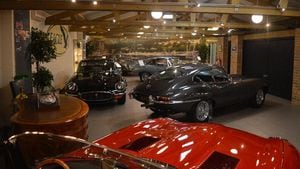
Perfection is something that’s rarely, if ever, achieved. The pursuit of such an ideal is a process that can take years, decades, or even an entire lifetime. Sadly for most, perfection is something that remains just out of reach. A dream that will never quite be realised.
There are those rare few who manage to come close, though, and Eagle – a small-scale automotive engineering firm based in the heart of rural East Sussex – is one of them, and we were lucky enough to be given a tour of their workshops.
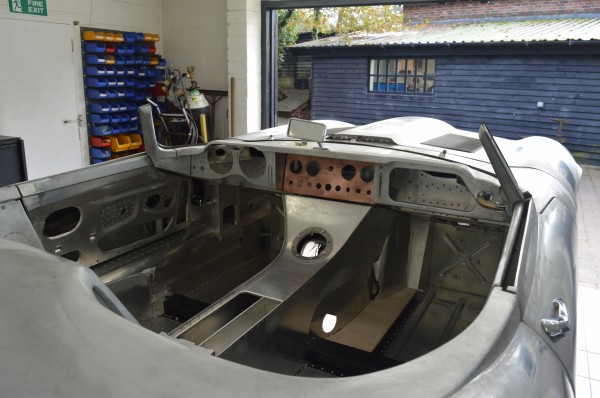
Eagle deals in one car, and one car only: the legendary Jaguar E-Type. Since it was founded in 1984, the company has become famous for its own “Eagle E-Types”, which are fastidiously restored over the course of about 4,000 hours.
It’s these Eagle E-Types, of which just 44 have been built since the firm’s inception, that have come to be what sets the Eagle apart from all other restoration firms.
These are not simply E-Types that have been treated to a bit of tender love and care to get them looking their best. The amount of work that goes into an Eagle E-Type beggars belief.
The process begins with a donor car, which – to the untrained eye – could already look to be a perfect example of an E-Type. Sometimes, Eagle will use a donor car that has seen better days, but it doesn’t buy complete wrecks as they don’t produce the best end results.
Each stage of the build process has its own dedicated work shop, whether that’s the body shop, fabrication department, paint shop or trim shop. All are laid out in such a way that the subject car can pass seamlessly through from one area to another as it progresses through the build process.
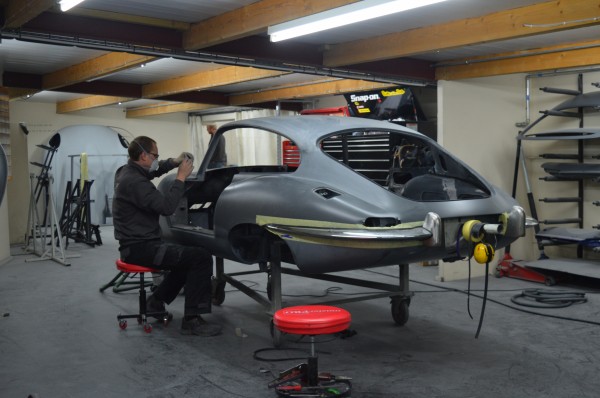
Once a donor car has been found, it is completely disassembled, with every last part examined to make sure it comes up to the Eagle gold standard. If a part falls short, the team will perform the necessary work to get it up to scratch.
The next step is the most impressive. Once the car has been taken apart and inspected, a new hand-built bodyshell will be constructed. This is no small task, with build time coming in at around 1,500 hours.
On occasion, everything will be new, but Eagle technicians work hard to ensure that as much of the original car is used as possible, so long as it can be restored to those impeccably high standards.
Eagle upgrades are facilitated at the bodywork stage to ensure that when they’re eventually fitted, they look as if they’ve come straight from the Jaguar production line. Trims and fittings are always “dry-fitted” prior to painting, to ensure they slide perfectly into place on final assembly.
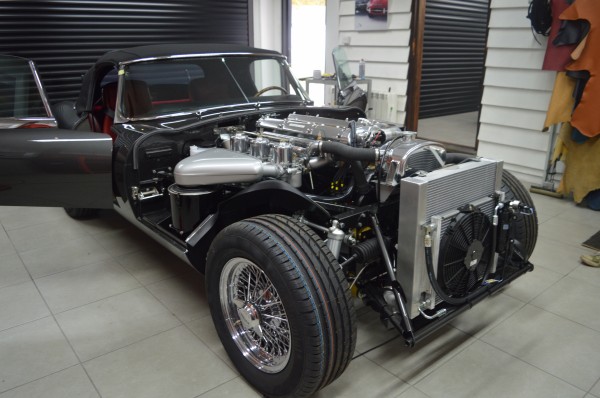
The completed bodyshell then heads through to the paintwork department, where it’s treated throughout the paint process not only to ensure that its colour lasts, but also to protect the body from corrosion.
During the build process, Eagle will also fit a number of upgrades to ensure the enhanced E-Type runs better than ever. These include everything from an Eagle-mapped electronic ignition system, to a modern fuel pump and improved cooling system.
The brakes are also uprated, and modern wiring is fitted throughout. While many of the underpinnings on an Eagle E-Type would never have been seen – or even existed – in the 1960s, they haven’t been introduced to dilute the spirit of the original car, only to enhance it – to make it into the car it would be if it were still manufactured today.
Past the upgrades that are fitted to all Eagle E-Types, customers have the opportunity to take their vehicle one step further, thanks to a range of additional upgrades that are also available.
These include Eagle’s own lightweight 4.7-litre aluminium engine, a bespoke five-speed gearbox in place of the original four-speed unit, speed-sensitive electric power steering and titanium exhaust systems to name but a few.
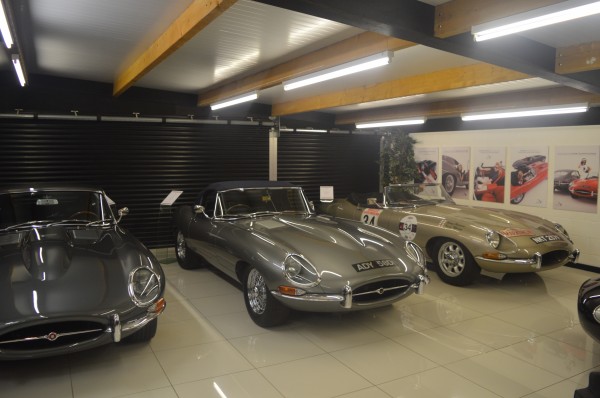
Following this, the car is reassembled, decked out with a new handmade interior and then extensively road-tested before being signed off as being ready for handover.
The sky really is the limit as far as specifying an Eagle E-Type is concerned, and this is reflected in their price. They certainly don’t come cheap, with the base Eagle E-Type – if you can really call it a base model – costing from £350,000.
That figure allows roughly £75,000 for the donor car, with the rest of the money being used to turn that vehicle into a highly coveted Eagle. Interestingly, it’s rare for Eagle customers to stick to this £350,000 figure. Most will end up specifying numerous options over and above those included as standard, meaning no two Eagle E-Types are ever quite the same.
What that small number of Eagle E-Type owners are left with isn’t only an immaculately restored, achingly beautiful classic sports car, but one that runs even better than it did when it was new.
If we ever happened to win the lottery, we know where our money would be going.





